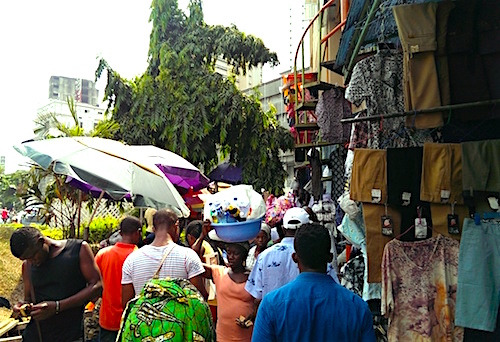The marketing of goods and service in Nigeria come in a variety of forms – TV commercials, radio adverts, print (newspaper and magazines), flyers, banner, billboards, social media and in-store stands. For a business to succeed in the Nigerian market, it must know the best way to market and brand its product or services in the most effective manner while avoiding common pitfalls. Besides knowing the form of media in which marketing messages are delievered, it is important for businessnes to know certain marketing concepts that are utilized in Nigeria to build succesful marketing campaigns.
Here are seven markeing terms in Nigeria you should know about:
Above the line (ATL) Marketing:
Above the line marketing consists of marketing activities that are largely non-targeted. With ATL advertising, businesses have full-blown customer facing campaigns that reach an audience in all forms of media. This form of marketing is focused on brand building and reaches everyone that has acceess to the medium through which the product is being advertised. A good example of ATL marketing is the successful “Long throat” campaign by Pepsi. This campaign used a variety of media to reach a mass audience and create awareness about Pepsi’s newly-launced package.
Sensitization:
This is Nigeria’s version of “creating awareness”. Sensitization is defined as a non-associative learning process in which repeated administration of a stimulus results in the progressive amplification of a response. In Nigeria marketing terms, the repeated administraion of stimulus – adverts – results in the progressive amplification of a response – behavioral change of the consumer. The behavioral change usually involves an improved awareness of a product or a program. Sensitization is commonly employed by government agencies in Nigeria to create awareness of new initiatives. Sensitization is a form of ATL marketing.
Below the line (BTL) Marketing:
Below the line marketing consists of activities that are more specific and directed towards a targeted group of consumers. Compared to ATL advertising where there is a focus on brand-building and awareness, BTL advertising focuses on direct customer engagement. In-store marketing is a form of BTL advertising used at retail stores in Nigeria to market to consumers at point of sale. The return on investment with BTL marketing is more measurable when compared to that of ATL marketing. There are certain industries that are only allowed to do BTL marketing. Cigarette companies, for instance, can only use BTL marketing becuase of the regulations placed on the tobacco industry.
Activation:
Also known in other parts of the world as “brand activation” refers to generating consumer interest by allowing consumers to use a product or experience a service. This can be done through product samplings, in-store retail marketing, sponsorships, and experiential events. The goal of this marketing activity is to leave the consumer with a favorable impression of the brand by giving them a chance to smaple the product or service. The key in brand activation is to show customers that promises made in other forms of advertising are true.
Through the line (TTL) Marketing:
This is a mixture of both ATL and BTL marketing. With social media and the internet as a meidum for marketing, a lot of companies are taking a more integrated approach towards marketing their products. With TTL marketing a company can focus on brand building as well as customer conversions.
Target audience (TA): A target audience is the demographic of people most likely to be interested in your product or service. Demographic data is used to classify an audience into age, gender, location, consumer class and other categories. Your target audience will usually be set at the briefing stage of a marketing campaign project, so you know who your marketing should focus on. Doing this at the initial stage makes a big difference because it dictates things like tone of voice and choice of advertising platforms for your marketing activities.
Consumer Class: In Nigeria, the consumer class refers to the socio-economic class of your target audience. The consumer class is usually split into four classes – A, B, C and D. The consumer class A are the wealthiest, class B are mid-high middle class, C are middle class and D represent the consumers in the lower-income class. The consumer class is a very important demographic to consider when understanding your target audience. For example, advertising to the masses in the consumer class D, would mean that radio will play a big part in your marketing and activations will also do well.
To develop a successful marketing plan in Nigeria, it is best not to make any assumptions. Do your research to understand the behavoir of your target audience. With this information, you can start to figure out what is special about your product or sevice that can spur a significant behavioral change and the best way to communicate those benefits.

